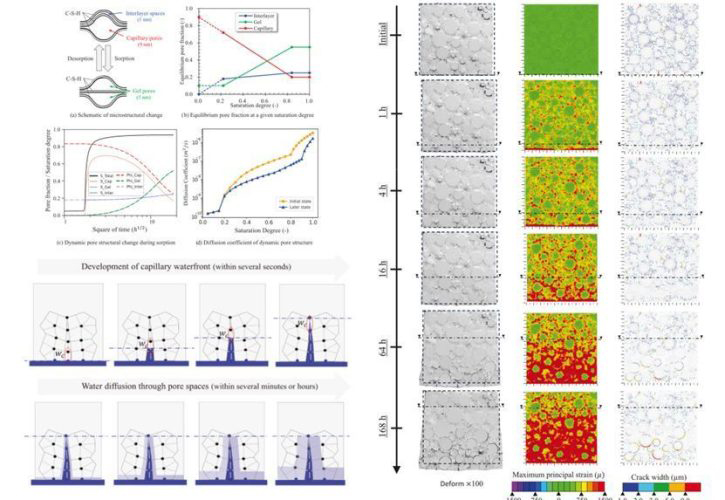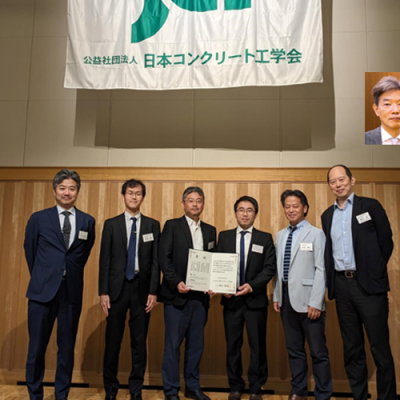Regarding moisture transport in concrete, the pore structure changes dynamically due to the cohesive and expansive behavior of C-S-H under dry and wet conditions, and resultantly, the moisture transport coefficient changes, along with the volume change of the cement paste itself, which causes cracks to close and/or open. Therefore, to be able to consider these multi-scale pore/crack changes, we proposed a moisture transport model that not only evaluates crack opening and closing using RBSM but also can consider the damage caused by drying cracks inside the mortar, mesopore volume changes due to C-S-H wetting/drying, as a source of moisture transport coefficient.
This model can quite accurately evaluate mass transport. In the future, we would like to expand the model to include a substantial rebar corrosion model, predicting cracks around the rebar and moisture retention during repeated dry and wet cycles.
P. Srimook, K. Ogawa, I. Maruyama, Meso-scale Modeling of Anomalous Moisture Transport in Concrete Considering Microstructural Change of Cement-based Material, J. Adv. Concr. Technol. 22 (2024) 344–371. https://doi.org/10.3151/jact.22.344.
Moisture transport in concrete considering Anomaly behavior














